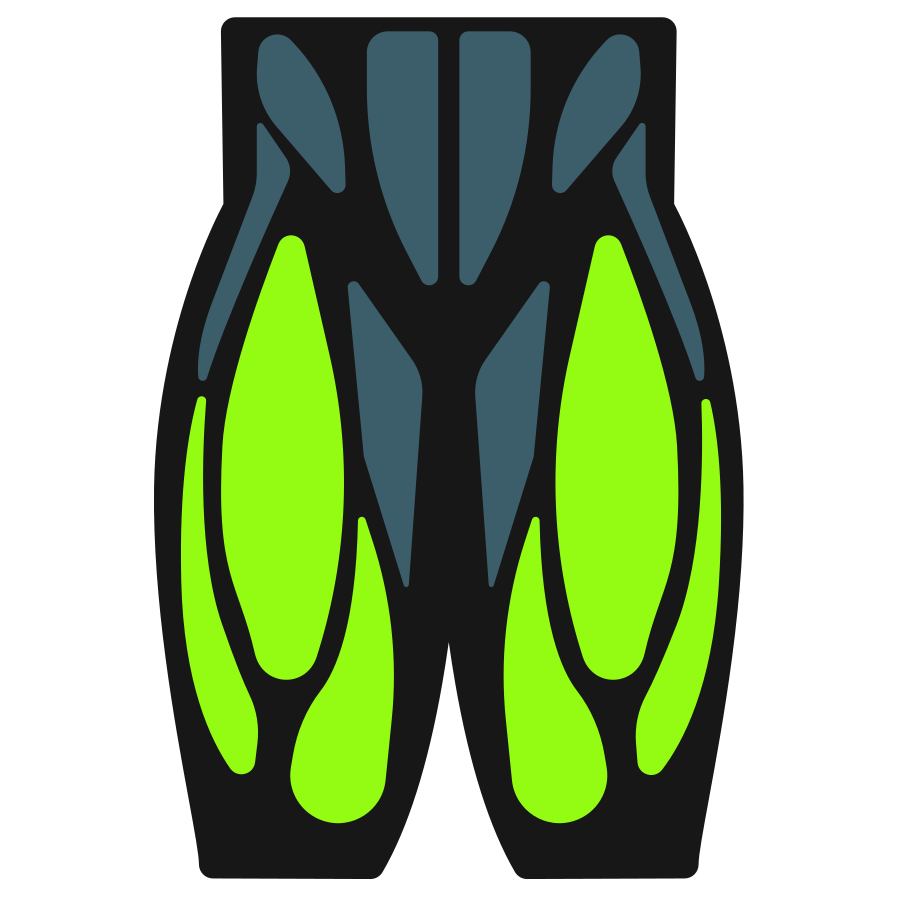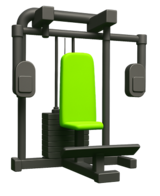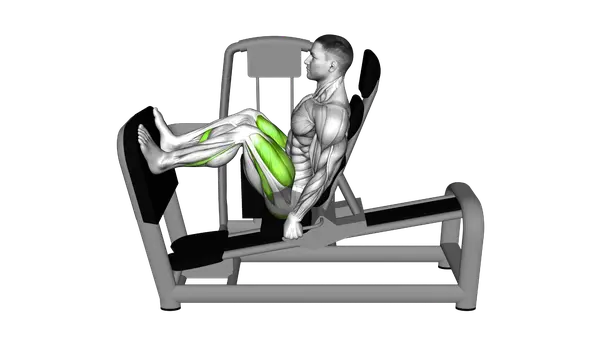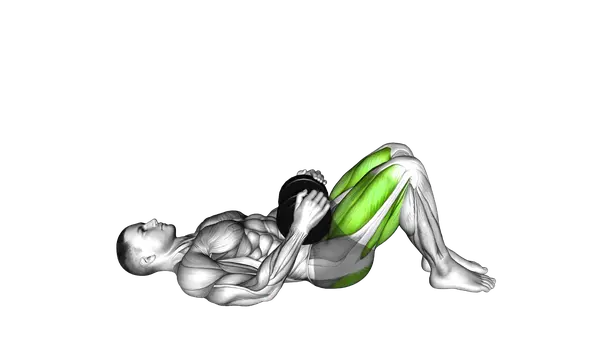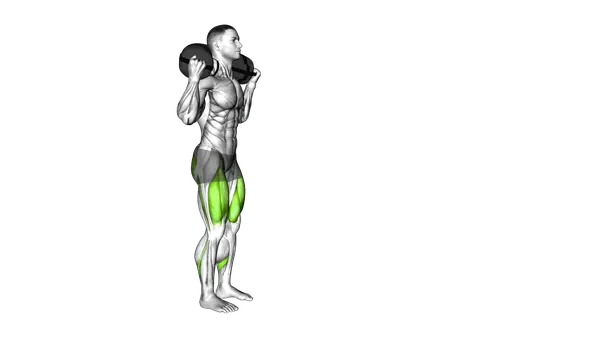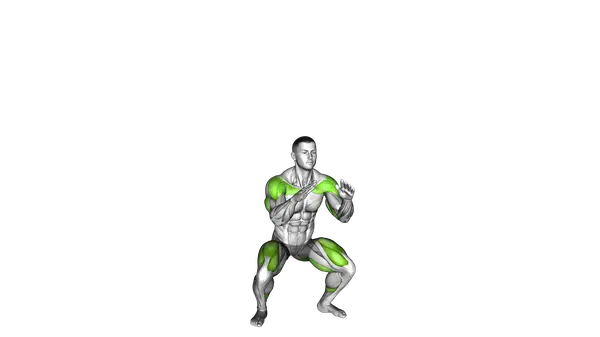Exercise
Sled 45 Degrees Leg Press
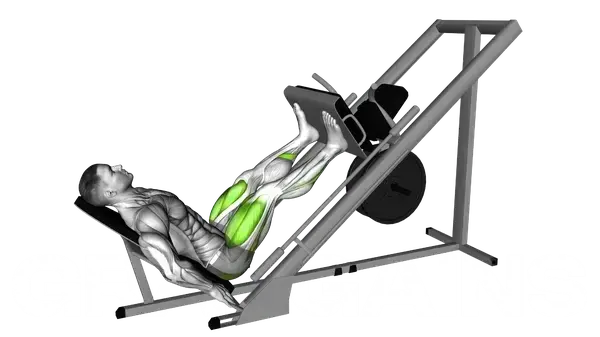
Sled 45 Degrees Leg Press
How to Perform
- Adjust the seat of the leg press machine, ensuring your back is firmly pressed against the padding with your hips and glutes positioned comfortably against the base.
- Place your feet on the platform hip-width apart with toes pointed slightly outward, positioning them at a height that allows your knees to bend at 90 degrees in the starting position.
- Grasp the safety handles on either side of the seat firmly to provide stability throughout the movement.
- Release the safety mechanism by pushing the side handles away, taking the weight fully onto your legs while maintaining a slight bend in your knees.
- Inhale deeply and slowly lower the platform by bending your knees, allowing them to move toward your chest until they form approximately 90-degree angles.
- Keep your lower back pressed firmly against the seat pad throughout the descent to protect your spine, avoiding the tendency to round your back as you lower the weight.
- Exhale forcefully as you push the platform away by extending your legs, driving through your heels while maintaining your feet flat on the platform.
- Extend your legs fully without locking your knees at the top position, then repeat the movement for the prescribed number of repetitions before re-engaging the safety mechanism.
Important information
- Never lock your knees at the top position as this places excessive stress on the joint and takes tension off the targeted muscles.
- Keep your head against the pad and avoid lifting it during the pushing phase, as this can create unnecessary neck strain.
- Position your feet high enough on the platform to emphasize quadriceps or lower to target more hamstrings and glutes, depending on your training goals.
- Start with a lighter weight to master proper form before progressing to heavier loads, especially if you're new to this exercise.

Sled 45 Degrees Leg Press
Exercise Details
Primary Muscles
Muscle Groups
Mechanic
Risk Areas
Built for progress
Take the guesswork out of training
Create personalized AI-powered workout plans that evolve with you. Train smarter, track every rep and keep moving forward, one workout at a time.





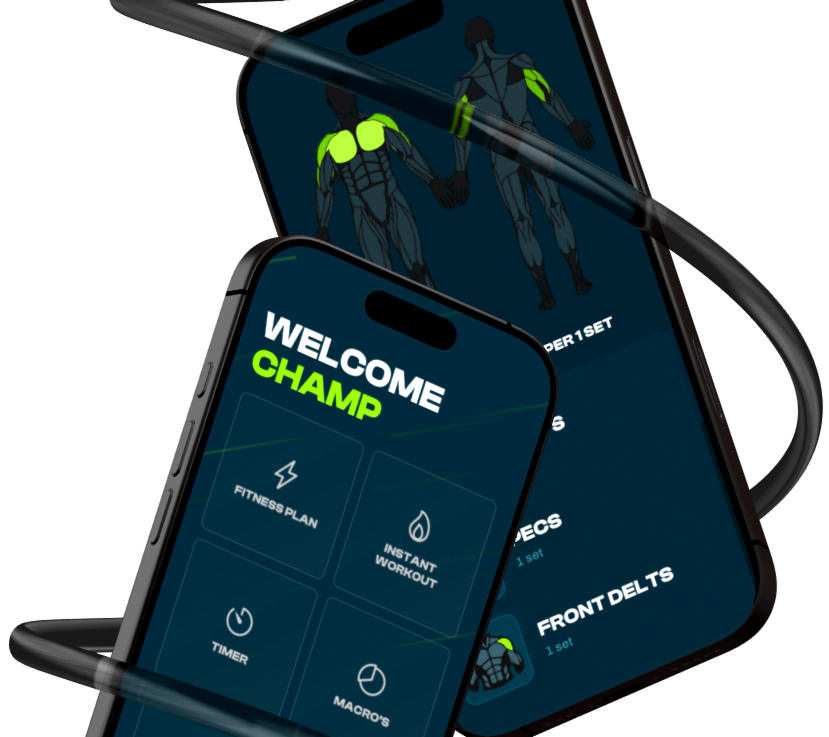
The 45-Degree Sled Leg Press stands as a cornerstone compound movement in strength training arsenals across bodybuilding and powerlifting disciplines. This intermediate-level exercise primarily targets the quadriceps while significantly engaging the hamstrings and glutes, creating a comprehensive lower body strength developer with minimal spinal loading compared to traditional squats. What makes the 45-degree angle variation particularly effective is how it positions the body to optimize force production through the lower extremities while maintaining proper biomechanical alignment.
The angled sled design creates a balanced resistance pattern that allows lifters to handle substantial loads (often much heavier than they could manage with free-weight alternatives) making it ideal for progressive overload protocols essential to both strength development and muscle hypertrophy. For bodybuilders, the 45-Degree Sled Leg Press offers precise muscle targeting capabilities through foot placement variations. Higher foot positions emphasize hamstring and glute recruitment, while lower placements shift focus toward quadriceps development—versatility that explains its popularity among physique athletes seeking balanced lower body development. The controlled environment also allows for intensity techniques like drop sets and partials that can push muscle fibers to new growth thresholds.
Powerlifters value this movement for its carryover to competitive lifts, particularly the squat. The substantial loading potential creates tremendous overload stimulus for the prime movers without the systemic fatigue generated by heavy barbell work. This makes it an excellent accessory movement for strength athletes looking to build specific leg power while managing recovery demands during intense training cycles. While offering significant benefits, the 45-Degree Leg Press complements rather than replaces free-weight training. Its fixed movement path provides stability advantages but reduces stabilizer muscle involvement. Most strength coaches position it as a secondary movement after primary barbell exercises to maximize development while minimizing injury risk, creating the balanced approach needed for long-term strength progression and lower body development.
FAQ - Sled 45 Degrees Leg Press
The 45-degree sled leg press primarily targets the quadriceps, while also engaging the hamstrings and glutes significantly. Foot placement can shift emphasis between these muscle groups—higher foot positions target hamstrings and glutes more, while lower placements emphasize quad development.
Neither better nor worse—they're complementary. The leg press allows you to handle heavier loads with less spinal loading and technical demand than squats, making it excellent for building raw leg strength. However, squats provide greater functional strength development due to their free-weight nature and core stabilization requirements.
The most common mistakes include lifting the hips off the pad (causing lower back strain), using too narrow foot placement (creating knee stress), locking out the knees completely, and loading too much weight leading to shortened range of motion. Always maintain contact between your back and the pad throughout the movement.
Place feet lower on the platform with a narrower stance to emphasize quadriceps. For greater hamstring and glute activation, position feet higher on the platform with a wider stance. Keep toes pointed in the same direction as your knees to maintain proper alignment regardless of foot position.
Most lifters benefit from including the leg press 1-2 times weekly, typically as a secondary movement after primary barbell exercises like squats. Advanced bodybuilders may use it more frequently with varied foot positions to target specific development, while ensuring 48-72 hours recovery between sessions training the same muscle groups.
